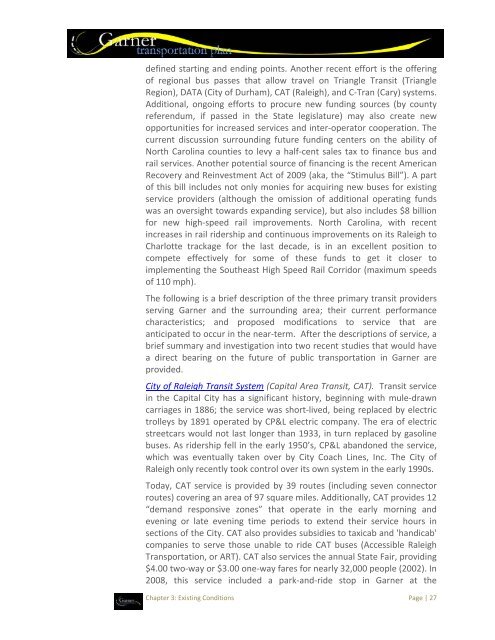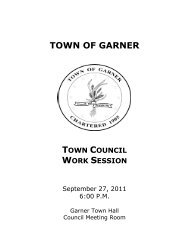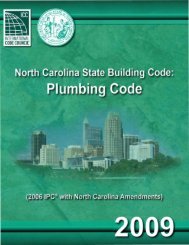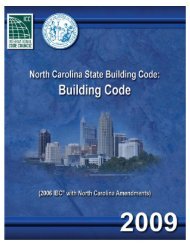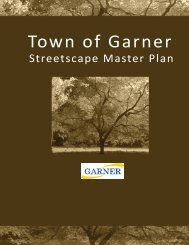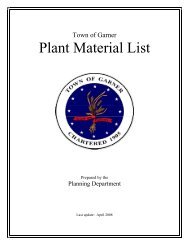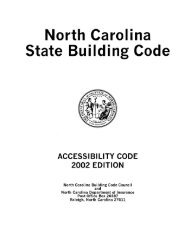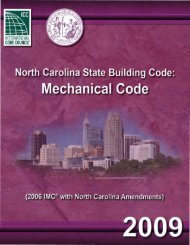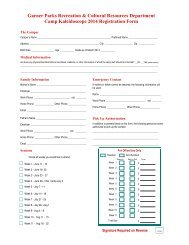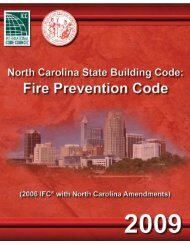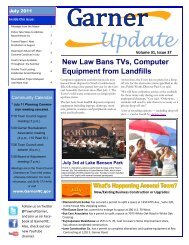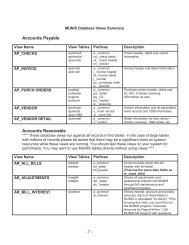Transportation Plan - Town of Garner
Transportation Plan - Town of Garner
Transportation Plan - Town of Garner
You also want an ePaper? Increase the reach of your titles
YUMPU automatically turns print PDFs into web optimized ePapers that Google loves.
defined starting and ending points. Another recent effort is the <strong>of</strong>fering<br />
<strong>of</strong> regional bus passes that allow travel on Triangle Transit (Triangle<br />
Region), DATA (City <strong>of</strong> Durham), CAT (Raleigh), and C‐Tran (Cary) systems.<br />
Additional, ongoing efforts to procure new funding sources (by county<br />
referendum, if passed in the State legislature) may also create new<br />
opportunities for increased services and inter‐operator cooperation. The<br />
current discussion surrounding future funding centers on the ability <strong>of</strong><br />
North Carolina counties to levy a half‐cent sales tax to finance bus and<br />
rail services. Another potential source <strong>of</strong> financing is the recent American<br />
Recovery and Reinvestment Act <strong>of</strong> 2009 (aka, the “Stimulus Bill”). A part<br />
<strong>of</strong> this bill includes not only monies for acquiring new buses for existing<br />
service providers (although the omission <strong>of</strong> additional operating funds<br />
was an oversight towards expanding service), but also includes $8 billion<br />
for new high‐speed rail improvements. North Carolina, with recent<br />
increases in rail ridership and continuous improvements on its Raleigh to<br />
Charlotte trackage for the last decade, is in an excellent position to<br />
compete effectively for some <strong>of</strong> these funds to get it closer to<br />
implementing the Southeast High Speed Rail Corridor (maximum speeds<br />
<strong>of</strong> 110 mph).<br />
The following is a brief description <strong>of</strong> the three primary transit providers<br />
serving <strong>Garner</strong> and the surrounding area; their current performance<br />
characteristics; and proposed modifications to service that are<br />
anticipated to occur in the near‐term. After the descriptions <strong>of</strong> service, a<br />
brief summary and investigation into two recent studies that would have<br />
a direct bearing on the future <strong>of</strong> public transportation in <strong>Garner</strong> are<br />
provided.<br />
City <strong>of</strong> Raleigh Transit System (Capital Area Transit, CAT). Transit service<br />
in the Capital City has a significant history, beginning with mule‐drawn<br />
carriages in 1886; the service was short‐lived, being replaced by electric<br />
trolleys by 1891 operated by CP&L electric company. The era <strong>of</strong> electric<br />
streetcars would not last longer than 1933, in turn replaced by gasoline<br />
buses. As ridership fell in the early 1950’s, CP&L abandoned the service,<br />
which was eventually taken over by City Coach Lines, Inc. The City <strong>of</strong><br />
Raleigh only recently took control over its own system in the early 1990s.<br />
Today, CAT service is provided by 39 routes (including seven connector<br />
routes) covering an area <strong>of</strong> 97 square miles. Additionally, CAT provides 12<br />
“demand responsive zones” that operate in the early morning and<br />
evening or late evening time periods to extend their service hours in<br />
sections <strong>of</strong> the City. CAT also provides subsidies to taxicab and 'handicab'<br />
companies to serve those unable to ride CAT buses (Accessible Raleigh<br />
<strong>Transportation</strong>, or ART). CAT also services the annual State Fair, providing<br />
$4.00 two‐way or $3.00 one‐way fares for nearly 32,000 people (2002). In<br />
2008, this service included a park‐and‐ride stop in <strong>Garner</strong> at the<br />
Chapter 3: Existing Conditions Page | 27


